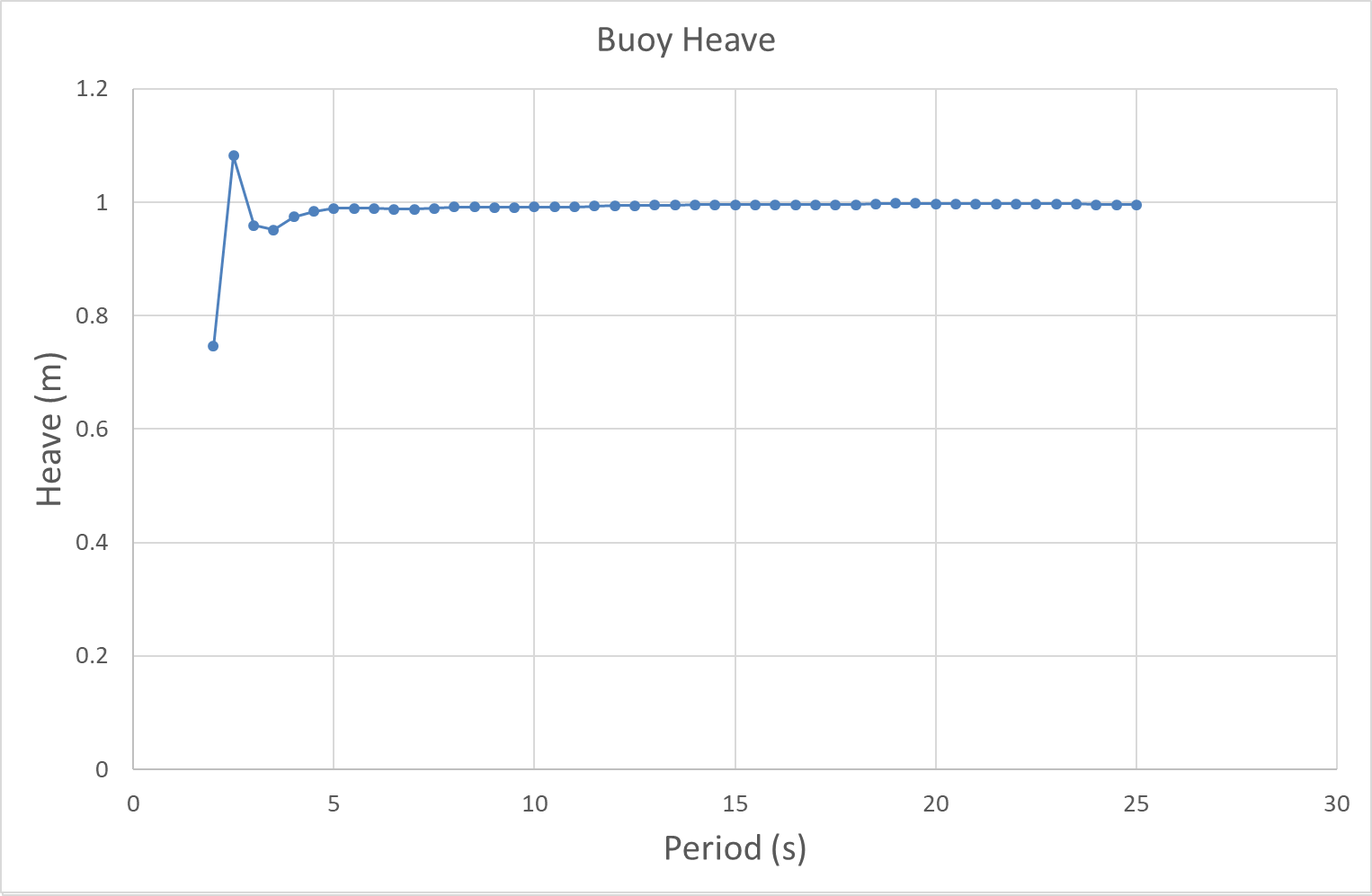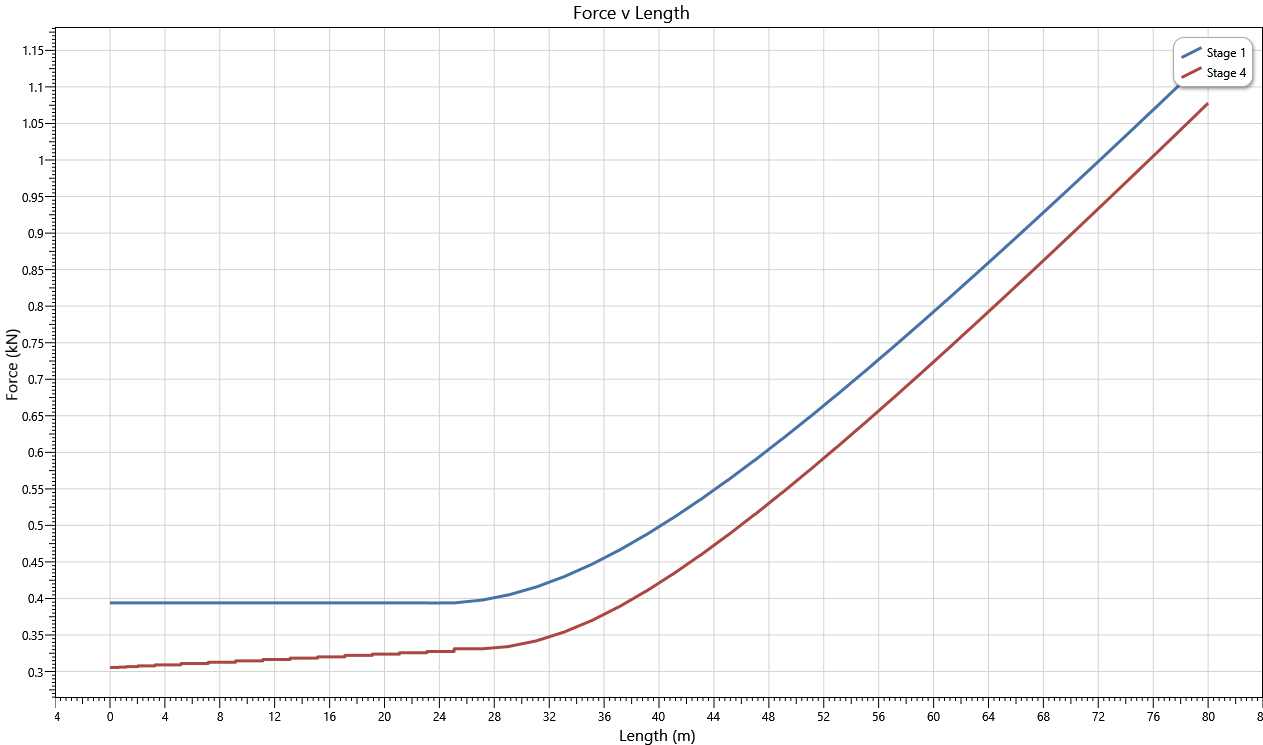The following figures illustrate the buoy response in heave, surge and pitch. As the amplitude of the regular waves is set to 0.5m, the response ranges quoted in the summary output file, and the summary collation spreadsheet subsequently, effectively represent the buoy RAOs. Ideally, smaller wave amplitudes should have been used with the shorter wave periods, but for simplicity a uniform amplitude was used across all periods in this example.
The heave response is close to unity at most wave periods, with the exception of some of the shortest ones. This is consistent with expectations as a measurement buoy is expected to ride the waves. Surge motions steadily increase with increasing period, with limited horizontal resistance being offered by the mooring ropes. Movement could be limited by the use of heavier chains on the seabed if required. Buoy pitch is very limited, with the largest pitch response being demonstrated at the lower wave periods.

Buoy Heave

Buoy Surge

Buoy Pitch
The next figure shows the static mooring line tension, illustrating the mobilisation of frictional forces along the seabed via the initiation stages. In the initial static analysis (Stage 1), the effective tension distribution remains constant along the seabed, as no frictional forces are mobilised during the computation of the static configuration. After the release and re-fixing of the anchor point (Stage 4), the tension gradually reduces between the touchdown point and the anchor.

Mooring Line Tension